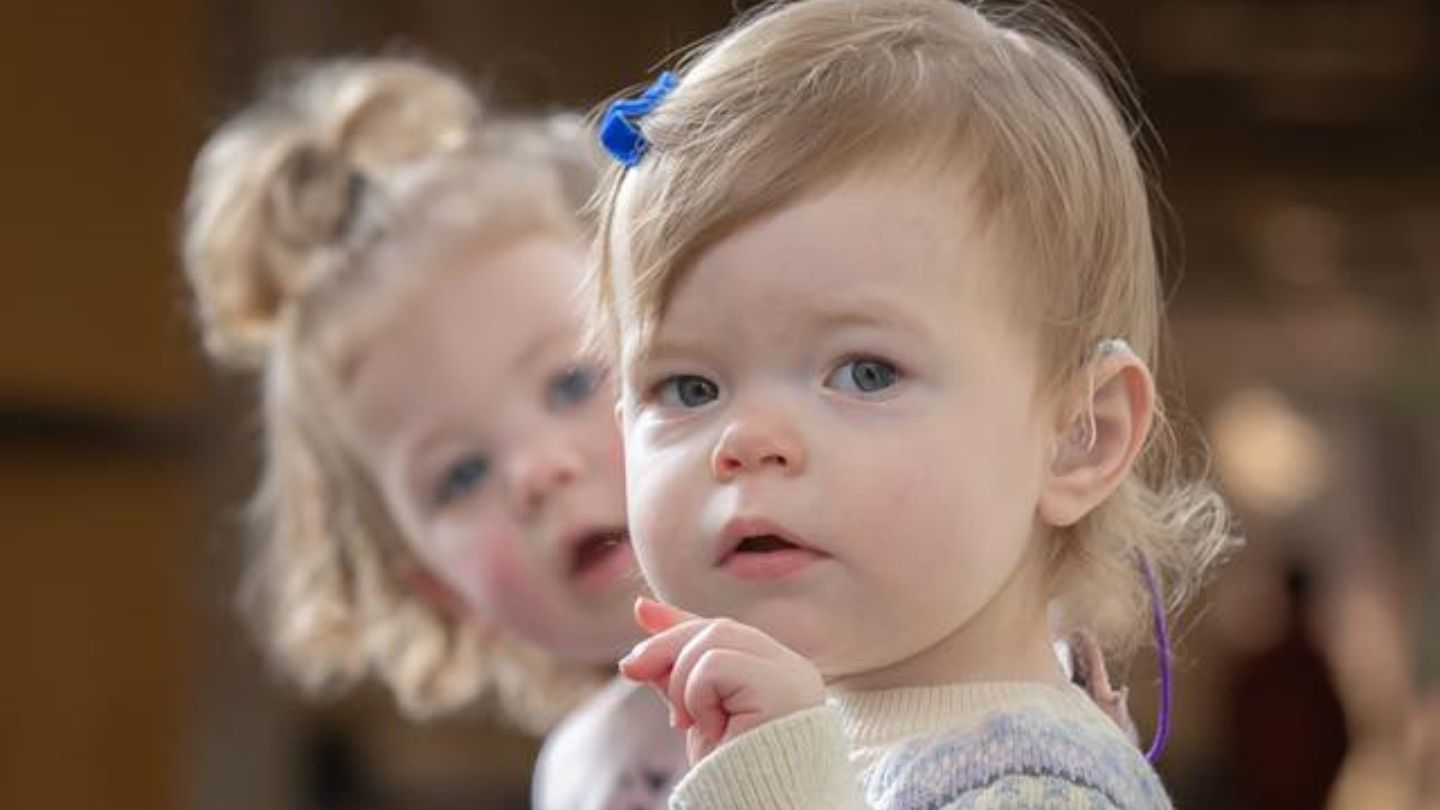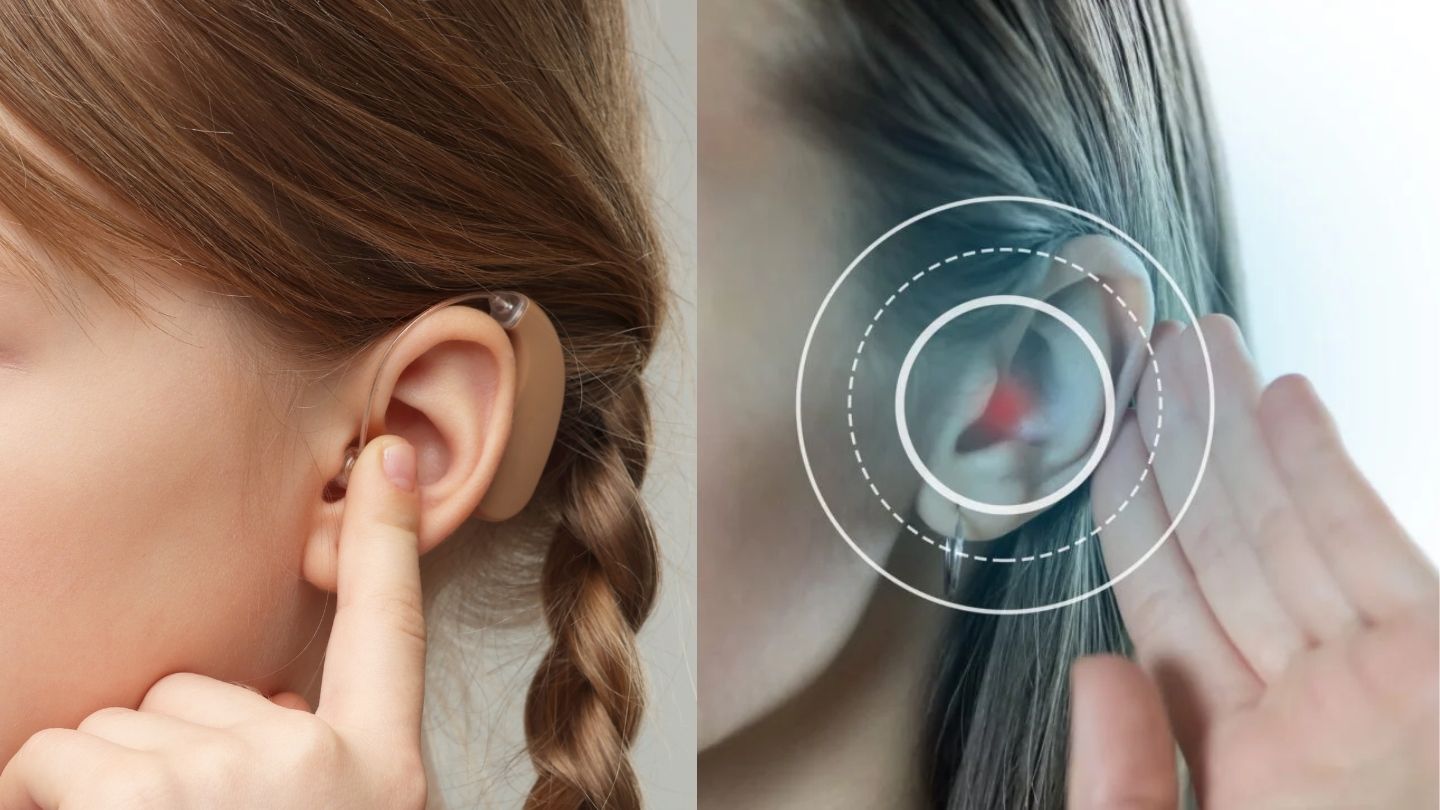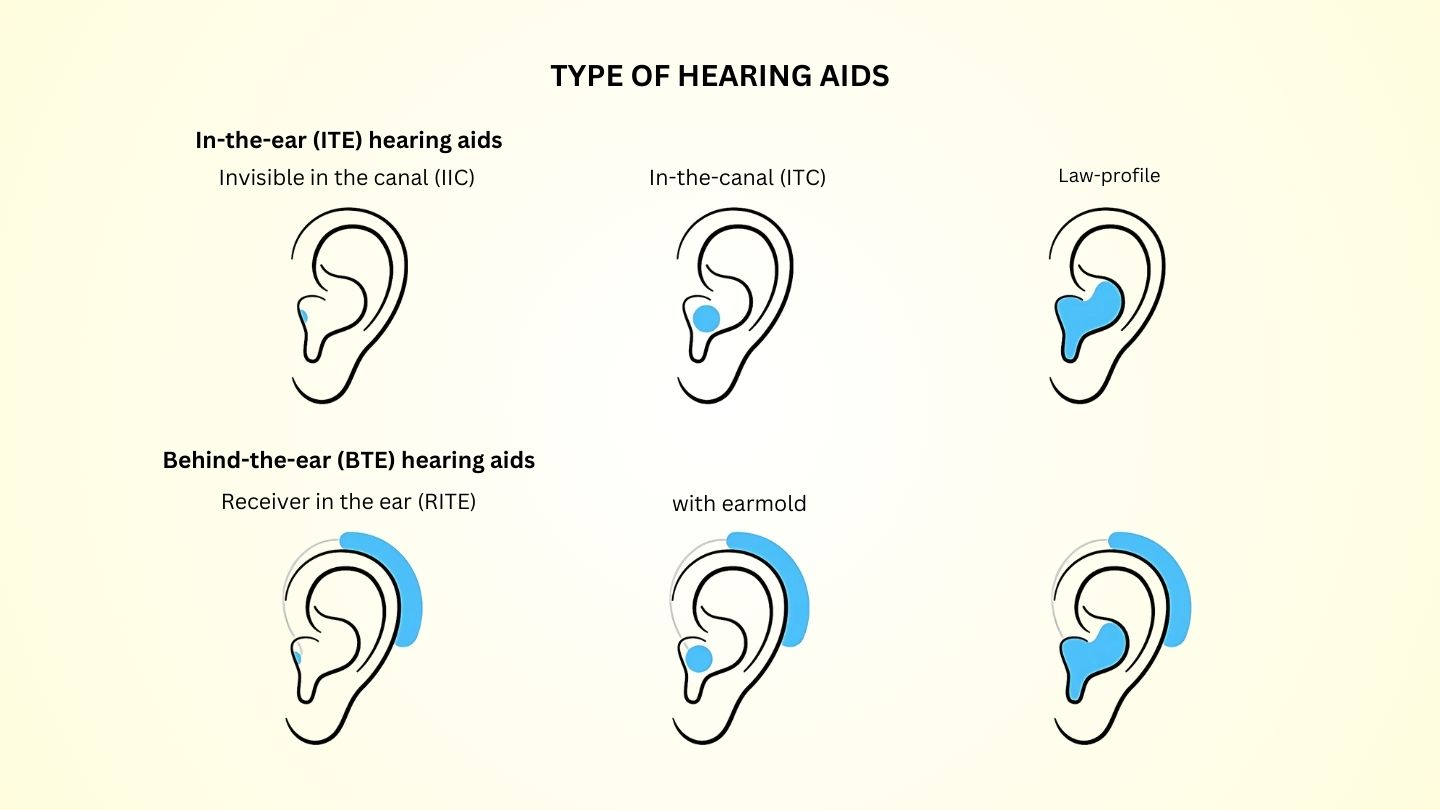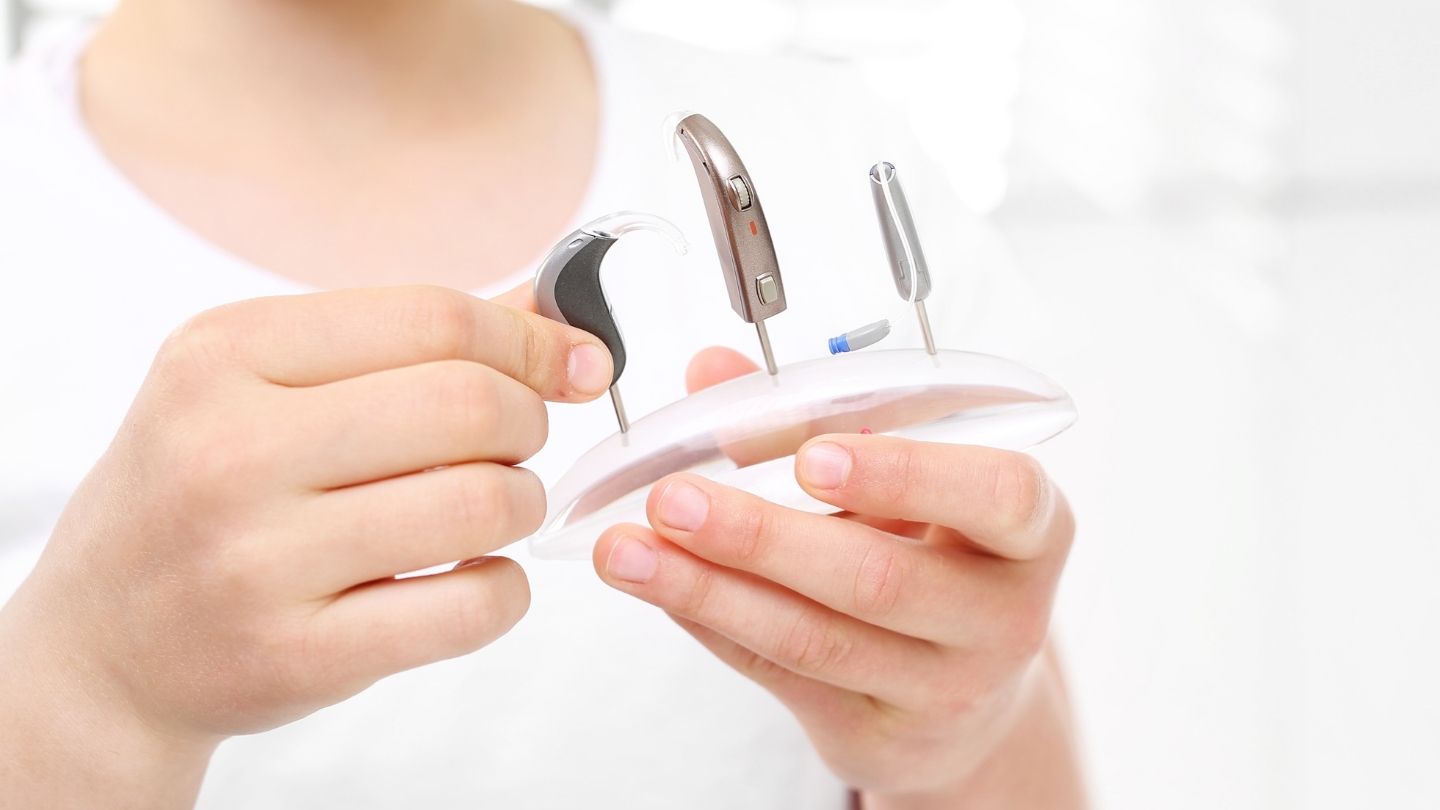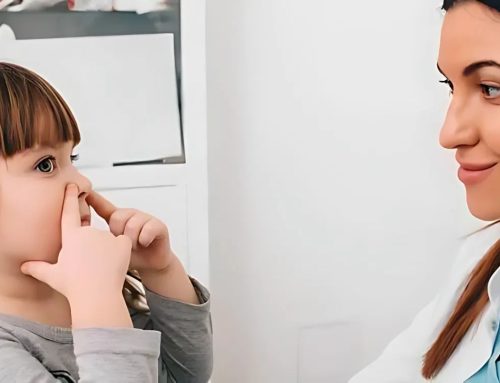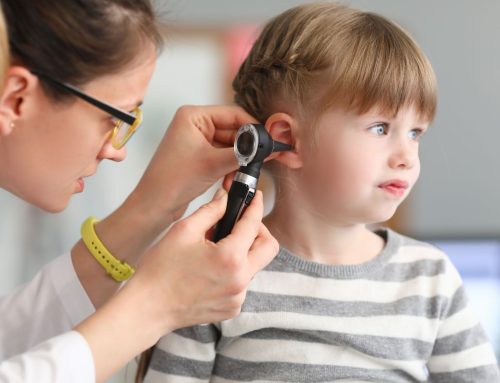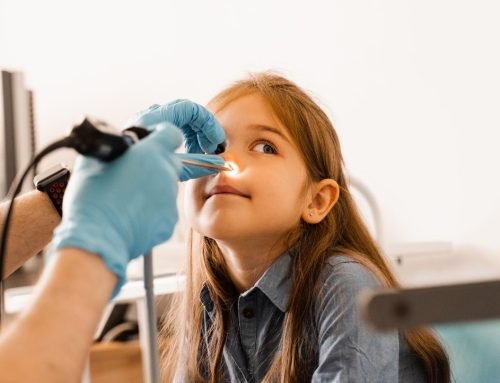Choosing the right hearing aid for a child depends on their age, type of hearing loss, and lifestyle needs. The most common type of hearing aid for children is the Behind-the-Ear (BTE) hearing aid, known for its durability and ease of adjustment as kids grow. This article will cover various types of pediatric hearing aids and essential factors to consider to help you determine what type of hearing aid is best for children, ensuring you make the best choice for your child.
Key Takeaways
- Pediatric hearing aids are specifically designed to accommodate the anatomical and auditory needs of children, ensuring comfort and effectiveness as they grow.
- Choosing the right hearing aid involves careful consideration of the child’s type of hearing loss, age, lifestyle, and the audiologist’s recommendations.
- Regular follow-up visits and proper maintenance are essential to ensure the hearing aids remain effective, comfortable, and appropriately fitted as the child’s needs change.
Key Differences Between Pediatric and Adult Hearing Aids
Pediatric hearing aids differ from adult models in several critical ways to ensure they are both safe and effective for children. They are designed to be free of allergens and harmful chemicals and often come in bright colors to appeal to young users.
Safety is paramount; thus, secure battery doors are a standard feature to prevent children from accessing and potentially ingesting batteries, which can pose serious harm. The size and style of these hearing aids are also tailored to fit smaller ears and to be more durable against the wear and tear of daily activities.
Age Considerations for Hearing Aids
When it comes to children, age plays a vital role in the use of hearing aids. Newborns just several months old may require hearing aids if they are diagnosed with hearing loss at an early stage. Nevertheless, toddlers often struggle to keep their hearing aids in place. Audiologists suggest using headbands and clips as practical solutions.
Supporting children emotionally is also fundamental throughout their experience with hearing impairment. Collaborating with audiologists and physicians, along with utilizing materials such as storybooks about dealing with hearing loss geared toward young readers, can help them cope better. As children develop, regular auditory examinations and updates to the devices are essential for ensuring that the child’s growing needs regarding their ability to hear continue to be fulfilled by the aid they receive.
Types of Hearing Aids for Children
Numerous hearing aids exist tailored to children’s unique auditory and physical needs, each offering distinct benefits based on the individual demands of a child’s hearing situation. The main categories encompass Behind-the-Ear (BTE) models and In-the-Ear (ITE). These devices are designed with precision for pediatric users to ensure they align well with the evolving structure of their ears as well as their specific hearing requirements.
Behind-the-ear (BTE) Hearing Aids
Behind the Ear (BTE) hearing aids stand as the most prevalent type utilized by children. These devices can effectively address varying degrees of hearing loss, ranging from mild to profound. They incorporate a pliable plastic earpiece that is fashioned to nest snugly within the outer ear, optimizing both comfort and efficacy.
In order to accommodate their growing users, these behind-the-ear BTE models are crafted in more compact dimensions for a firm fit on smaller ears. As youngsters develop toward during their initial five years, it may be necessary to replace earmolds at regular intervals spanning from several weeks up until months.
In-the-Ear (ITE) and In-the-Canal (ITC) Hearing Aids
ITE (In-the-Ear) and ITC (In-the-Canal) hearing aids are often the better choice for older children. The ITE devices are designed to fit within the outer ear, whereas ITC models tuck neatly into the ear canal. They tend to be preferred due to their subtle visibility, which can appeal to children who feel self-conscious about wearing hearing aids.
On the other hand, children who lead active lifestyles may need more robust options that can endure rigorous daily use.
Factors to Consider When Choosing a Hearing Aid
Choosing the right hearing aid for a child involves ensuring it suits their specific hearing loss and is properly programmed to enhance hearing. Parents should consider costs, including insurance aid, and secure a warranty for maintenance and repairs. A thorough medical examination is crucial before purchasing to identify the best solution for the child’s needs.
Degree of Hearing Loss
The appropriate hearing aid for a child is heavily influenced by the severity and nature of their hearing loss. Children who experience profound hearing loss may need stronger hearing aids than those with mild or moderate levels of hearing impairment.
After conducting an in-depth evaluation of the child’s auditory capabilities, an audiologist will advise on the best type of hearing aid to suit their specific needs related to their hearing loss.
Comfort and Fit
When it comes to pediatric hearing aids, ensuring that they fit comfortably is crucial. If a hearing aid fits poorly, it can cause discomfort, which may result in the child being reluctant to wear the device regularly. A bad fit might also lead to problems with feedback, thereby diminishing how well the hearing aid functions.
The design of pediatric hearing aids takes into account both durability and practicality due to children’s active lifestyles. To simplify use and avoid confusion during the application, distinct colors are often used for each ear’s ear or dome. As the child grows and their ear changes size, these components must be replaceable without difficulty.
Lifestyle and Activity Level
When choosing a hearing aid, it is essential to take into account the lifestyle and activity level of the child. Pediatric hearing aids are designed with adjustable features that can be tailored to meet each child’s unique preferences and requirements. By selecting a hearing aid that aligns with the child’s way of life, you ensure their ability to engage in daily activities and interactions seamlessly.
Follow-Up Visits
Consistent check-up appointments are crucial for tracking the child’s auditory capacity and evaluating the effectiveness of their hearing aids. Given that a child’s ear dimensions and auditory requirements can evolve, regular evaluations are key to ensuring proper calibration of the hearing aid devices. As a result, it may be necessary to periodically change ears in response to growth in the size of the child’s ears. A reliable ENT specialist should be considered for pediatric Hearing aids and hearing loss for kids in Atlanta to ensure that the child receives the best care.
Final Thoughts
Ensuring regular check-ups and maintenance for pediatric hearing aids is vital for maintaining their optimal functionality. In academic environments, it’s also essential to provide additional support through assistive listening technologies and active engagement from educators and classmates to enhance educational outcomes. By following these guidelines, parents and healthcare providers can make impactful decisions that significantly improve a child’s listening and communication abilities.
For comprehensive care and expert guidance on pediatric hearing aids and hearing loss for children in Atlanta, consider reaching out to Pediatric Ear Nose and Throat of Atlanta, P.C. Our dedicated team offers specialized services tailored to your child’s needs, ensuring they receive the best support for their hearing and communication development. Contact us to learn more and schedule an appointment today!
Frequently Asked Questions
What are the essential components of pediatric hearing aids?
Pediatric hearing aids consist of a microphone, processor, receiver, and battery, which are essential for effective sound amplification.
These components work together to enhance the auditory experience for children with hearing loss.
Why are BTE hearing aids commonly used for children?
BTE hearing aids are commonly used for children due to their adaptability, durability, and effectiveness across various levels of hearing loss. These features ensure that they can meet the growing needs of children as they develop.
How can I keep my child’s hearing aids in place?
To ensure that your child’s hearing aids remain securely positioned, especially in the case of toddlers, it is advisable to utilize specially crafted headbands or clips.
Employing this method not only stabilizes the hearing instruments but also improves their level of comfort for the wearer.

